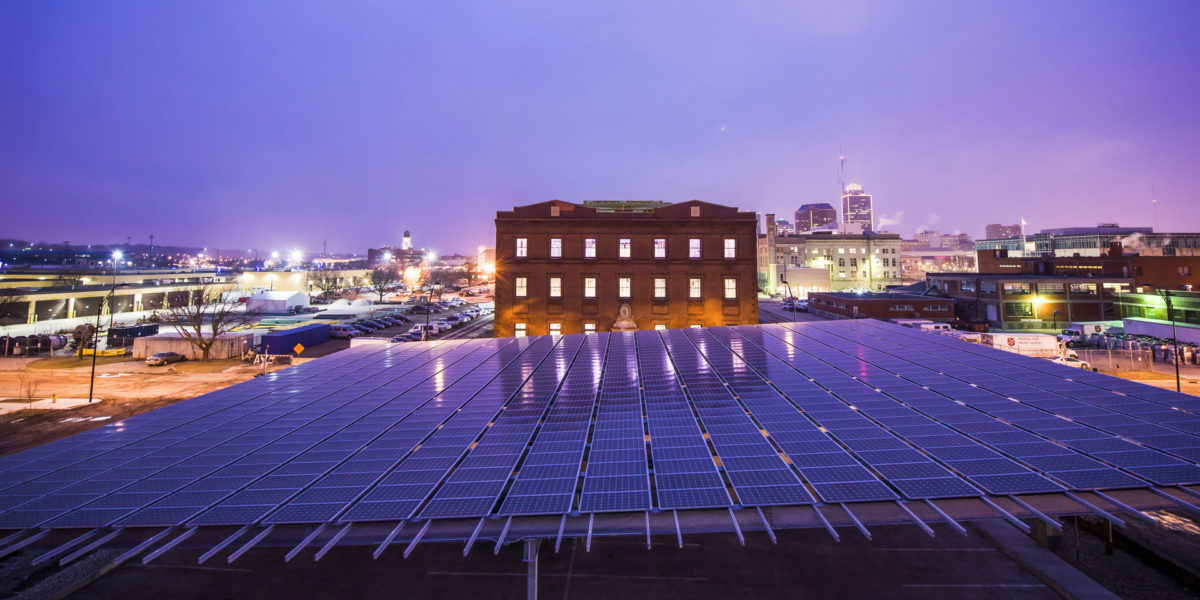Researchers from Lahore University and Benha University have proposed doubling the efficiency of today’s standard solar panels by going beyond the cutting-edge perovskite-silicon tandem solar cell in an increasingly common bifacial format.
The scientists project that their combination of materials can reach into the high 20% range in the standard single side format, to which they then add a second layer of that solar cell and place it all within a glass on glass solar module. The glass on glass bifacial solar module will boost the cell’s total electricity output by 10-30% – hitting between 30-36% efficiency.

This research is presented in a paper is titled High-Performance Bifacial Perovskite/Silicon Double-Tandem Solar Cell, and can be found in the most recent issue of the IEEE Journal of Photovoltaics.
The researchers describe the cell, which is shown above on the left in comparison to other solar cell structures:
In this paper, we propose a 3-T, four-junction perovskite/silicon double-tandem (PSDT) solar cell structure that can efficiently harvest light in all ranges of albedo by stacking two tandem perovskite/silicon cells in a flipped configuration with a common (middle) terminal.
The top solar cell layers absorb most of the direct sunlight and shows an efficiency of 27.7%, with perovskite and silicon subcells having 16.5% and 11.2% efficiencies, respectively. The bottom solar cell mostly absorbs the albedo – reflected sunlight – and shows an efficiency of 5.4% at 30% reflection, with perovskite and silicon subcells having 3.2% and 2.2% efficiencies, respectively. At the comfortable 30% albedo, the solar module peaks at a total 33.1% efficiency.

As the solar panel moves above an albedo of 30% – equivalent of light sand – and moves toward that of a white rubber EPDM roof, which has an albedo well above 40%, the solar cell becomes saturated with photons and maxes out. Further refinement – such as varying the thickness of cells – allows continued gains in efficiency on the backside of the solar cell driving the whole solar panel toward 36% efficiency.
Each layer is chosen to complement the bandgap of the other layers, which maximizes absorption of high and low-energy photons as they move through the solar cell. The layers of perovskite and silicon are reversed on the bifacial side to capture the reflected light. The below image shows which energy photon is absorbed by which layers of material in the solar cell, on either side of the bifacial panel.

It should be noted that the “silicon” layer is actually a heterojunction crystalline silicon-amorphous silicon layer, similar to what Solartech Universal builds using Meyer Burger technology. So we’re really adding two layers of additional material atop a crystalline silicon solar cell.
One reason innovation is following along the crystalline silicon solar cell pathway is that manufacturers have invested significant expertise and money in building over 100 GW/year of factory capacity – they’ve got a bit of a case of technology lock in. If an extra machine of two can be added to current lines, much like PERC solar cells did, and we can gain significant efficiencies, then a logical and safe path forward could be migrated towards en masse. Adding a second technique – bifacial – just follows along what we’re already doing, and lets us take advantage of single axis trackers which are already learning to maximize bifacial technology.
And while perovskite is really still a novelty, it’s getting harder to ignore these very high efficiency values and how we can make use of them. Arizona State University’s Fulton Schools of Engineering suggested that a 32% perovskite-silicon tandem cell – costing three times future cutting-edge pricing – would still be economically competitive. This new solar cell proposes a solution not to far out of the box the ASU analysis modeled, meaning at 36% it could carry a bit more hardware cost from the tandem cell.
Oxford PV and their recent real world 27.3% perovskite-silicon tandem cell record: be still my heart. Now flip it, double it and throw it in a glass-on-glass!
By John Weaver
This content is protected by copyright and may not be reused. If you want to cooperate with us and would like to reuse some of our content, please contact: editors@pv-magazine.com.








By submitting this form you agree to pv magazine using your data for the purposes of publishing your comment.
Your personal data will only be disclosed or otherwise transmitted to third parties for the purposes of spam filtering or if this is necessary for technical maintenance of the website. Any other transfer to third parties will not take place unless this is justified on the basis of applicable data protection regulations or if pv magazine is legally obliged to do so.
You may revoke this consent at any time with effect for the future, in which case your personal data will be deleted immediately. Otherwise, your data will be deleted if pv magazine has processed your request or the purpose of data storage is fulfilled.
Further information on data privacy can be found in our Data Protection Policy.